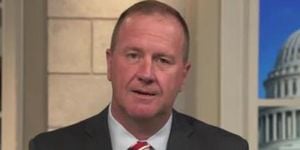As of April 3, 2025, mortgage rates have dipped slightly, influenced by recent economic developments, including tariff announcements from the White House. The average rate for a 30-year fixed mortgage is currently around 6.40%, while 15-year fixed mortgage rates hover at approximately 5.80%. This decrease comes amidst a backdrop of market turbulence and stock volatility, particularly following President Donald Trump's announcement of sweeping tariffs.
On April 2, 2025, the White House revealed a plan to impose a 10% tariff on imports, which has raised concerns about potential economic repercussions. As a result, bond traders are now anticipating more Federal Reserve rate cuts. The announcement has led to fluctuations in the bond market, ultimately resulting in a slight decrease in mortgage rates. The 10-year Treasury yield dropped, which typically correlates with lower mortgage rates.
In the face of these changes, lenders are adjusting their rates. The average 30-year fixed-rate mortgage now stands at 6.70%, down from previous highs, while 15-year fixed mortgages are at 5.96%. Jumbo mortgage rates also reflect this trend, with the average rate for a 30-year fixed jumbo mortgage at 6.69%.
According to data from Zillow, the average 30-year refinance rate is approximately 6.48%, showing competitive rates for those looking to refinance their existing loans. The recent fluctuations in rates can be attributed to broader economic trends, including inflation and employment figures. As the Federal Reserve continues to monitor these factors, it is expected that they will hold the federal funds rate steady during their upcoming policy meeting on May 6 and May 7, 2025.
Despite the current lower rates, the market remains cautious. The upcoming jobs report is anticipated to show a modest increase of about 130,000 jobs added to employer payrolls in March, with the unemployment rate holding steady at 4.1%. This data will be crucial for understanding the trajectory of mortgage rates moving forward.
The Federal Reserve's recent decision to keep the federal funds target interest rate steady at a range of 4.25% to 4.50% has also influenced the mortgage market. This marks the second consecutive meeting where the Fed has opted not to adjust rates, following a series of cuts in 2024 aimed at controlling inflation. The Fed's statement emphasized the need to carefully assess incoming data and the evolving economic outlook, indicating that they are prepared to make further adjustments if necessary.
As potential homebuyers navigate this fluctuating landscape, understanding the factors that influence mortgage rates is vital. Key considerations include the borrower’s credit score, the size of the down payment, and the type of mortgage being sought. For instance, borrowers with excellent credit scores typically qualify for better rates, while those making larger down payments may also secure more favorable terms.
While the current economic climate presents challenges, it also offers opportunities for savvy buyers. For those currently paying higher interest rates, refinancing could yield significant savings. For example, a homeowner with a $300,000 mortgage at a 6.75% interest rate could potentially lower their monthly payments from approximately $1,948 to about $1,896 by refinancing at the current rate of 6.40%.
However, it is essential to weigh the costs of refinancing against the potential savings. Borrowers should consider the fees associated with refinancing and whether the long-term benefits outweigh these initial costs. Additionally, as mortgage rates can fluctuate daily, timing can play a crucial role in securing the best possible deal.
Experts suggest that prospective homebuyers should remain informed about market trends and shop around among different lenders to find the best rates. Utilizing online mortgage calculators can also help buyers understand how varying rates and terms can impact their monthly payments and overall loan costs.
As we move further into 2025, the interplay between economic indicators, Federal Reserve policy, and market reactions will continue to shape the mortgage landscape. While the current trend shows a slight easing of rates, ongoing monitoring of inflation and employment data will be critical in determining future movements.
In summary, the current mortgage rates reflect a complex economic environment influenced by recent tariff announcements and the Federal Reserve's policy decisions. For homebuyers and those considering refinancing, staying proactive and informed is essential to navigate the intricacies of mortgage financing effectively.








